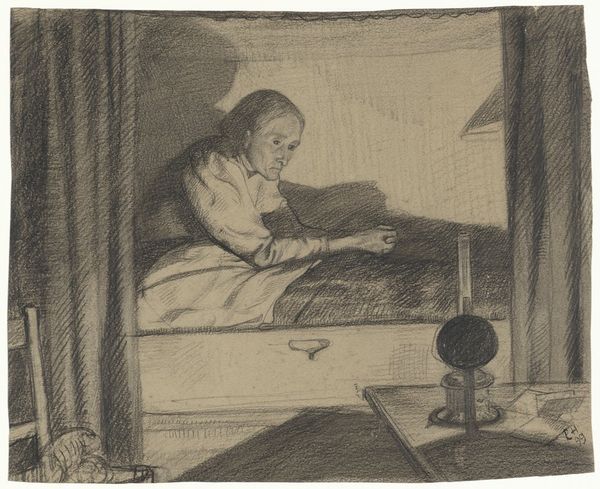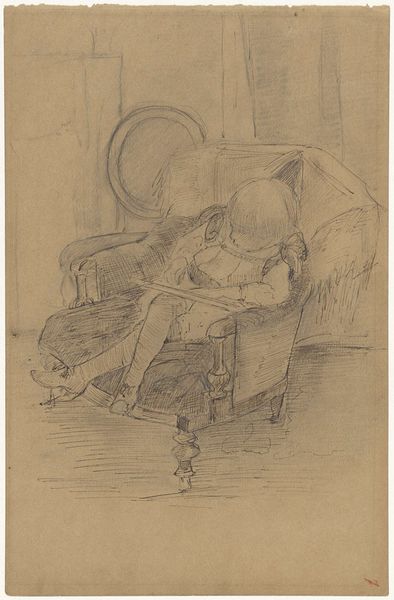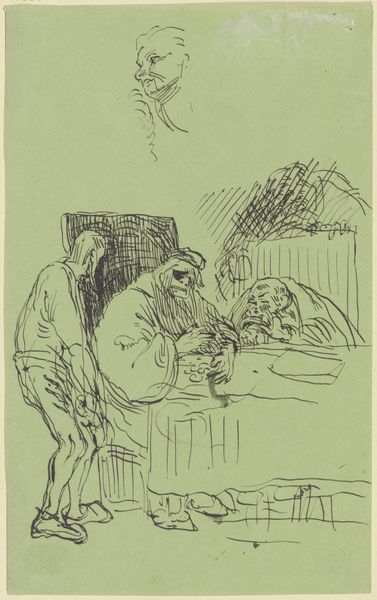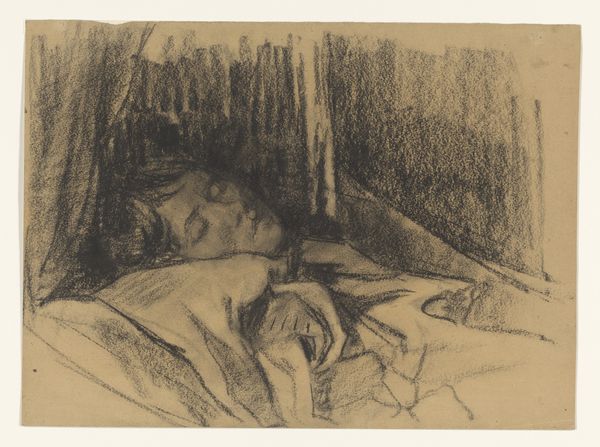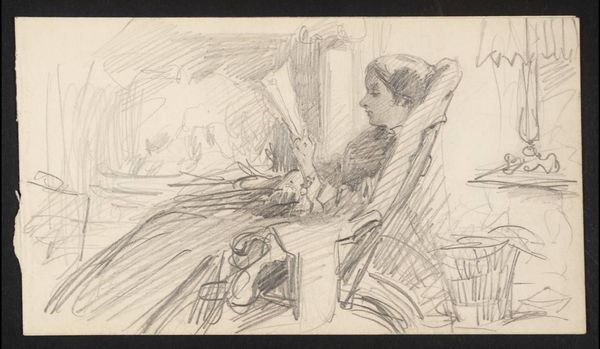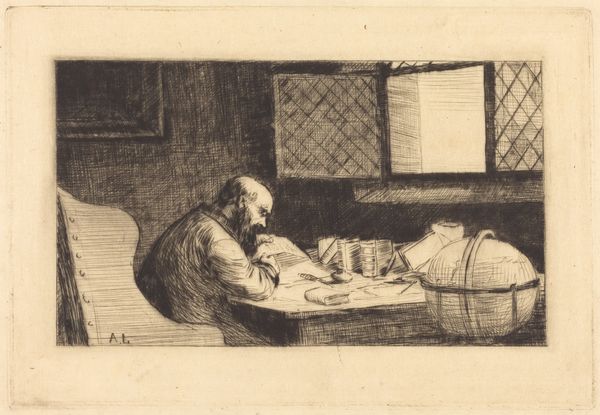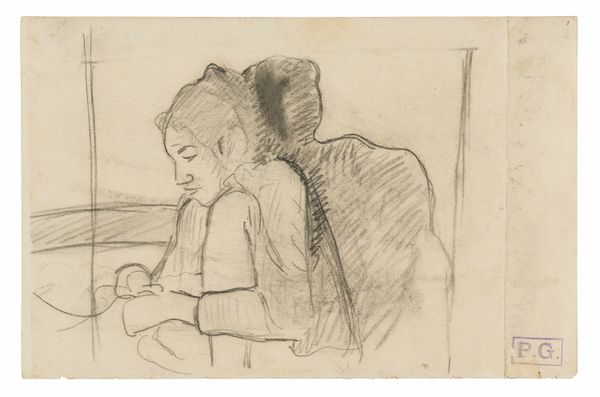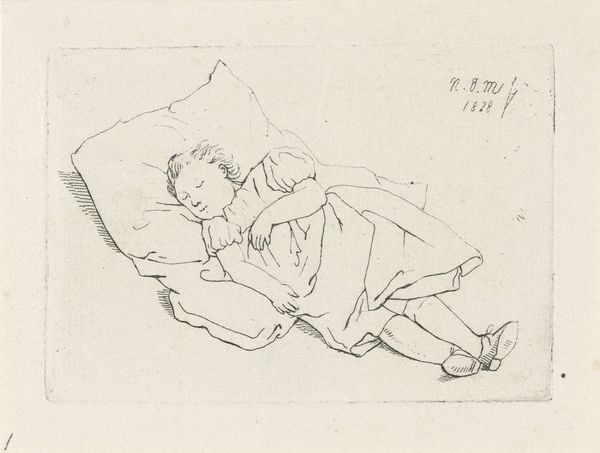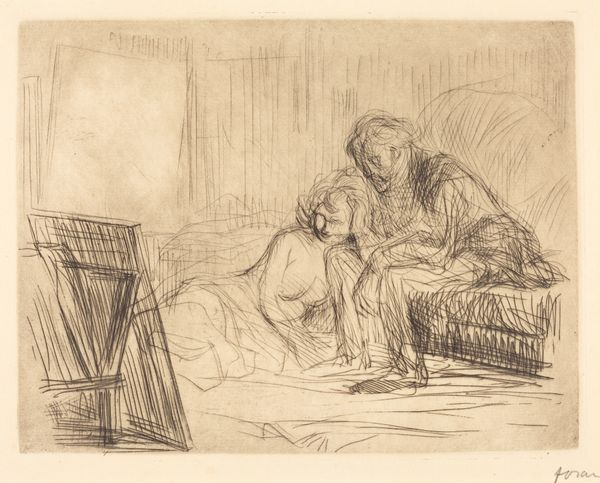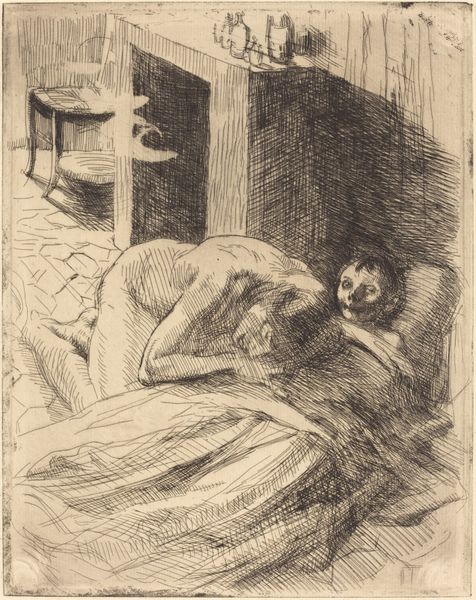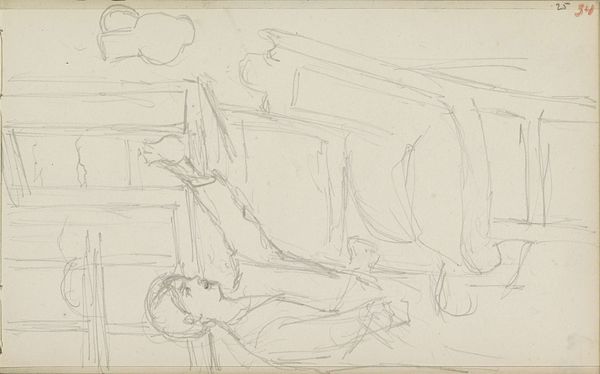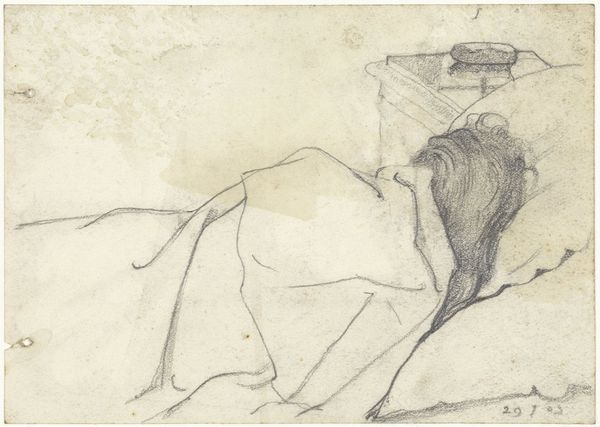
Dimensions: height 216 mm, width 249 mm
Copyright: Rijks Museum: Open Domain
Curator: This pencil drawing by Richard Nicolaüs Roland Holst, titled "Woman in Bed (second design)" dates to 1899. There's such an overwhelming stillness to it, isn't there? Editor: Absolutely, an everyday scene, perhaps ordinary at first glance, but steeped in profound quiet. I'm drawn to the materiality, the subtle variations of the pencil strokes; you can almost feel the artist's hand at work, building up shadows to give us a scene ripe with loneliness. Curator: Roland Holst, though primarily known for his decorative work and socialist activism, was deeply engaged with fin-de-siècle anxieties and class disparity, concerns which are reflected in this incredibly vulnerable scene. Her social standing, even implied by the 'Hogerhuis' – higher house – in the title, does little to shield her from an apparent isolation. It also evokes themes of late 19th century female introspection portrayed across a diversity of art. Editor: It does make you question that social class. Look at the bare essentials, a simple bed, a sparse room; even the light from that candle suggests limitation, lack. Curator: I see her isolation also as an active refusal to participate in the outside world. Bed becomes this stage, but it simultaneously isolates and cocoons the figure within it. I keep wondering about the melancholic mood—the figure, the sleepy dog resting in the corner of the room alludes perhaps, to her grief or resignation. Editor: It feels like a sketch too, almost industrial in its repetitive marking making me wonder about his own artistic labour, a study, or practice to better create and express the materials and people. It begs us to contemplate what purpose this served him and what its impact is for all its viewers. Curator: I think understanding it as part of the wider social and political context that Roland Holst operated in, you see an indictment of late 19th-century society’s expectations, especially those foisted onto older women. Editor: It does bring out complex elements to be unraveled from something seemingly as everyday and simple such as an isolated figure on what may just seem to be a random day. Curator: Precisely. It highlights the struggles, the inner turmoil masked by social expectation, even across a quick intimate study like this one. Editor: To focus on process then, its creation, it is a sobering observation.
Comments
No comments
Be the first to comment and join the conversation on the ultimate creative platform.
